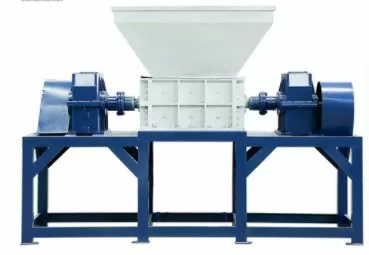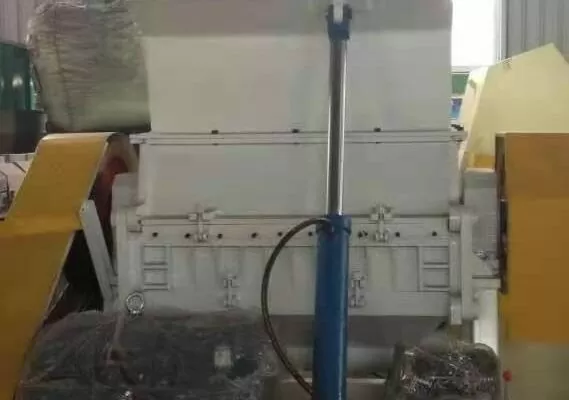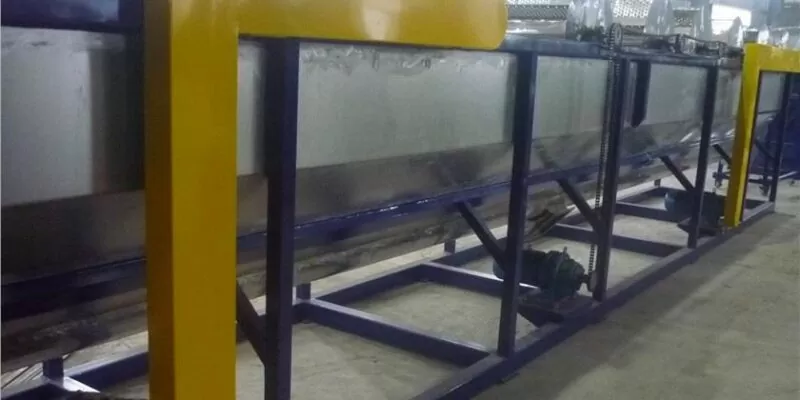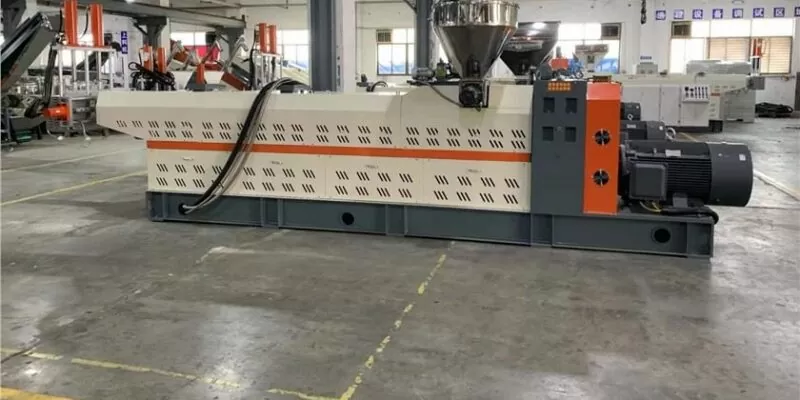In my early days as CEO of Amige, I was struck by the relentless tide of plastic debris contaminating our oceans. The problem seemed insurmountable. I watched helplessly as plastic waste choked marine life and disrupted delicate ecosystems. My heart pounded with frustration and worry. Yet, I knew that innovative technology held the key. I dove into the world of plastic crushing. The solution was not just mechanical—it was transformative. I was determined to harness this technology to protect our blue planet.
The answer is clear: plastic crushing technology breaks down large plastic waste into manageable, recyclable pieces, reducing environmental harm and aiding recycling processes. By implementing advanced machinery and meticulous processes, we can transform oceanic plastic pollution into raw material for new products. Our innovative approach, backed by data from tech data, is both efficient and eco-friendly, paving the way for a cleaner future.
I’m excited to share my journey and insights with you. Every breakthrough fuels my passion for a greener planet.

At Amige, innovation meets responsibility. I lead a dynamic team devoted to developing cutting-edge solutions for environmental challenges. Plastic pollution in our oceans isn’t just an abstract issue; it affects real lives and vibrant marine ecosystems. I have witnessed firsthand the devastation caused by plastic waste, and that drives me to act. Our work on plastic-crushing technology is a testament to what persistent innovation can achieve. I’m here to share practical, actionable steps based on years of research and trial.
Every day in our workshop is a blend of creativity, technical rigor, and a sense of urgency. I often joke that plastic, once a persistent nuisance, now meets its match at our facility. Our processes are designed to be efficient and safe, ensuring we turn hazardous waste into valuable resources. I firmly believe that technology, when applied responsibly, can create a circular economy. More details can be found in our comprehensive process flow.
What is the Background of Ocean Plastic Pollution?
I always ask myself: How did our beautiful oceans become a dumping ground for plastic? The answer lies in decades of overconsumption and poor waste management. Plastic’s durability, once seen as a benefit, has turned into a curse when it comes to environmental degradation. I recall studying data from background data that revealed startling rates of plastic accumulation in marine environments. It’s clear that our reliance on single-use plastics has created a monumental waste crisis.
This crisis not only harms marine biodiversity but also affects human health. As plastic degrades, it releases microplastics that enter the food chain, posing long-term risks. At Amige, I’ve seen the impact firsthand. Our mission became clear: to mitigate this pollution using technology that converts waste into resource. Our journey in plastic crushing began with understanding the problem deeply, and every step forward is a commitment to reversing this trend.
How Does Plastic Crushing Technology Work?
I’ve spent countless hours in the lab perfecting plastic crushing techniques. At its core, plastic crushing technology involves mechanically breaking down large plastic pieces into smaller, uniform particles. This makes recycling and reprocessing far more efficient. My team and I use state-of-the-art machinery to control particle size precisely. According to data support, this method greatly enhances the effectiveness of subsequent recycling processes. The transformation is not just physical; it’s a gateway to a circular economy.
We start with the collection of waste plastic, followed by careful sorting. Each type of plastic is processed separately to ensure purity. Then, the plastic enters our crushing machines where it is shredded into fine particles. I insist on rigorous quality control at every stage. This meticulous attention to detail has been key to our success. By turning stubborn, bulky waste into versatile raw material, we’re offering a practical solution to a global problem.

What Are the Challenges and Solutions in Plastic Crushing?
Implementing plastic crushing technology isn’t without its hurdles. I remember early on, the challenge of processing mixed plastics. Different plastic types have varying hardness, density, and chemical properties. This diversity often leads to uneven crushing and unwanted by-products. To overcome these issues, my team and I developed adaptive systems that adjust machine settings in real time. Detailed methodologies can be reviewed in our challenge report.
Another significant challenge was the management of dust and micro-debris during the crushing process. The finer the plastic particles, the higher the chance of airborne dust—which can be hazardous. I took this very seriously. We incorporated advanced dust extraction and filtration systems into our operations. These systems work tirelessly to keep our workspace safe and clean. It’s a testament to our commitment that every potential risk is addressed with robust solutions and continuous innovation.
How Do We Ensure Sustainability and Eco-Friendliness?
I’m a firm believer that sustainable practices are the cornerstone of any successful business. At Amige, our plastic crushing technology isn’t just about efficiency; it’s about creating an eco-friendly cycle. Once the plastic is crushed, the particles are either recycled into new products or used as raw material in various industries. Our approach reduces waste and minimizes the environmental footprint. More on our sustainable methods can be found in eco data.
Every step we take is designed with the planet in mind. I’ve invested in energy-efficient machinery and rigorous maintenance protocols to ensure our operations are as green as possible. Our systems are engineered to minimize power consumption while maximizing output. I even oversee regular training sessions with my team to emphasize environmental responsibility. The impact of our work is visible—fewer plastics in our oceans and more recycled materials in the market. This balance of technology and sustainability is what I consider our greatest achievement.
What Are Some Real-Life Success Stories?
One of the most inspiring moments in my career was witnessing our plastic crushing technology in action in a coastal city project. We partnered with local authorities to establish a temporary processing center. Within months, the amount of plastic debris on the beaches dropped dramatically. I personally oversaw the installation and calibration of the machines. The transformation was astounding. For a detailed case study, visit our application case.
Another memorable success was in the industrial sector. A major manufacturing plant struggled with disposing of waste plastic generated during production. We implemented our crushing system to turn this waste into valuable recycled material. The plant not only reduced its environmental impact but also cut costs significantly. Witnessing these successes has been profoundly rewarding. It reinforces my belief that technology can turn pollution into opportunity and hardship into hope.

What Is Our Future Direction and Vision?
As I look to the future, my vision for Amige is both ambitious and clear. I see a world where plastic waste no longer threatens our oceans but is instead transformed into a resource. Our next steps involve integrating artificial intelligence and IoT technologies into our crushing systems. This will enable real-time monitoring and optimization of every process. Our future plans are detailed in our future roadmap.
I’m also committed to expanding our global footprint. Collaborations with governments, NGOs, and private enterprises are in the pipeline. I firmly believe that solving environmental issues requires a unified, global approach. We’re not just selling machinery; we’re offering a sustainable solution that benefits communities and ecosystems alike. I invite you to join us on this journey toward a cleaner, greener planet. Our future is bright when innovation meets environmental stewardship.
Frequently Asked Questions?
I often receive questions about how our technology works and its broader implications. For example, many ask: “How does crushing plastic reduce overall pollution?” My answer is simple. By converting bulky plastic waste into smaller, manageable particles, we make recycling more efficient. This process drastically reduces the volume of waste entering our oceans. More information on this process is available in our recycling process.
Another frequent question is about safety. “Does the crushing process produce harmful dust?” I assure you it does not. We have integrated sophisticated dust extraction systems that capture and filter out hazardous particles. Additionally, regular maintenance and rigorous quality checks ensure safe operations. If you’re curious about our safety protocols, please check safety guidelines. I’m proud to say that our commitment to safety is as strong as our drive for innovation.
How Do We Maintain Our Equipment for Optimal Performance?
Maintaining our advanced plastic crushing machinery is a critical component of our operations. I personally oversee the maintenance schedules. Every piece of equipment undergoes regular inspections and servicing. This ensures that our machines always operate at peak efficiency. I’ve seen how neglecting even minor details can lead to significant downtime. Detailed maintenance protocols are outlined in our maintenance tips.
We use high-quality, durable components that withstand the rigorous demands of continuous operation. My team and I have developed a preventive maintenance program that not only extends the lifespan of our machinery but also ensures consistent performance. By investing in regular upkeep, we guarantee that our technology remains reliable and effective in reducing ocean plastic pollution.

What Role Does Innovation Play in Our Environmental Efforts?
Innovation is the heartbeat of our operations. I truly believe that every challenge presents an opportunity to innovate. Plastic crushing technology has evolved from a rudimentary concept to a sophisticated, intelligent system. We continuously refine our processes, driven by a desire to create solutions that are both effective and environmentally sustainable. I like to say, “Innovation isn’t just our job—it’s our passion.” For insights into our innovative journey, refer to innovation data.
My team is constantly exploring new materials, improving machine efficiency, and integrating digital monitoring systems. Every advancement not only boosts our productivity but also contributes to a healthier planet. I find that sharing these breakthroughs motivates others in the industry to pursue greener practices. Together, we can reshape the future of waste management and environmental conservation.
What Is Our Social Responsibility and Environmental Commitment?
At Amige, I believe that our responsibility extends far beyond profit margins. As CEO, I take pride in our commitment to social and environmental stewardship. We actively participate in community initiatives, from beach clean-ups to educational outreach programs. I see every project as an opportunity to give back. More details about our community engagement can be found in our social responsibility report.
I encourage our employees to volunteer and support local environmental causes. This is more than corporate social responsibility—it’s a personal mission. Every effort we make helps create a ripple effect, inspiring others to join the fight against ocean plastic pollution. Our dedication to these initiatives is unwavering, and I am honored to lead a company that truly cares about the future of our planet.
Conclusion
In summary, plastic crushing technology is a transformative tool in reducing ocean plastic pollution. Through innovative machinery, meticulous processes, and unwavering commitment, we can turn plastic waste into a resource. Let’s join hands and create a cleaner, sustainable future for all.
